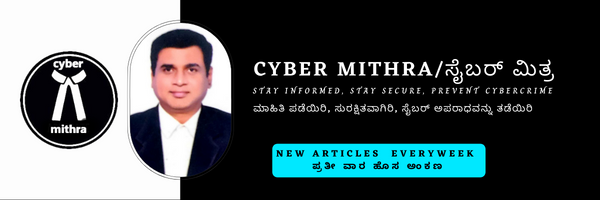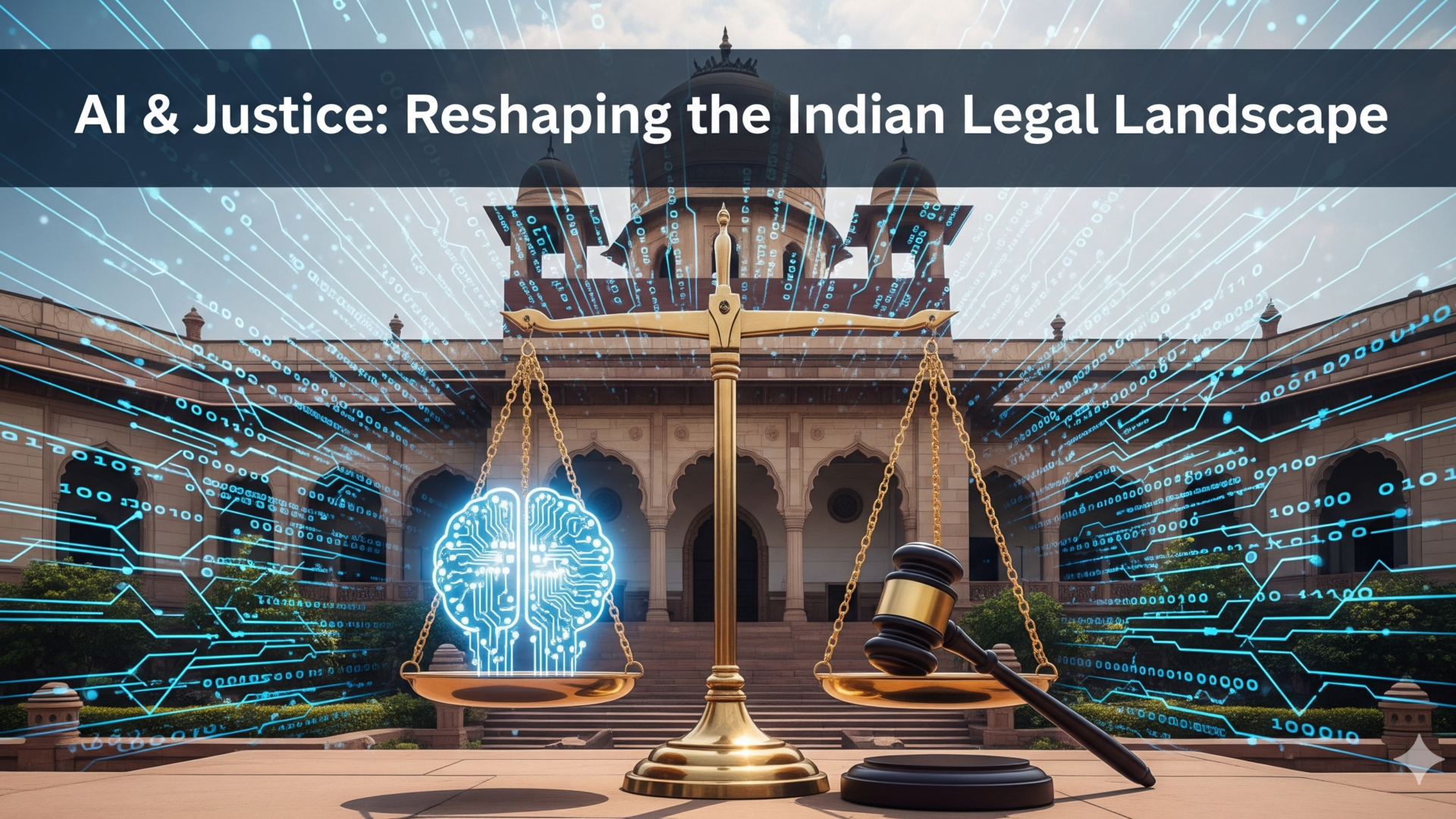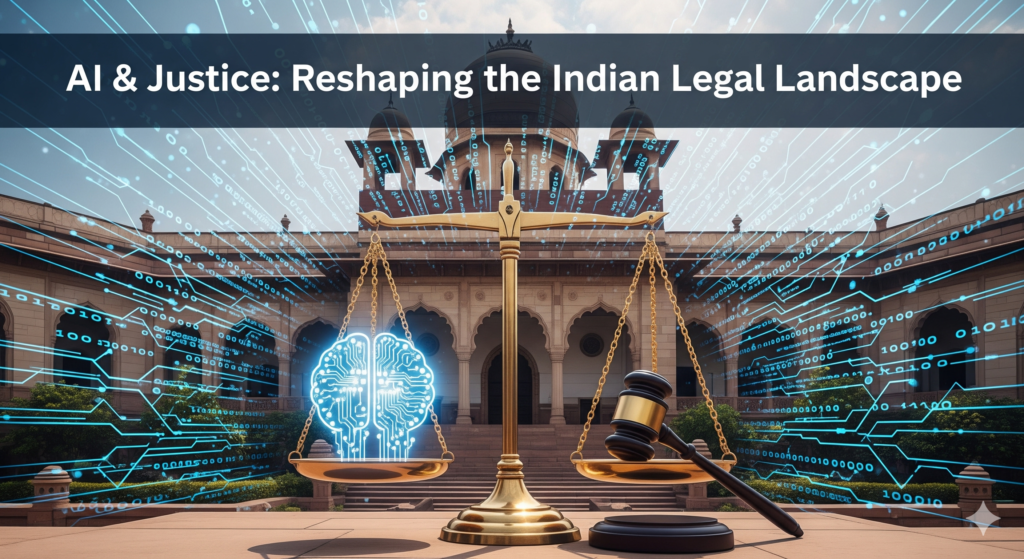From E-Courts to AI : A new AI era in Indian Justice System
India’s judicial system is one of the largest and most complex in the world. With millions of cases still pending in courts, delay in justice has become a major challenge. For ordinary people, going to court means long waits, loss of time, and financial burden. In this situation, technology—especially Artificial Intelligence (AI)—is emerging as a strong ally. Just as technology has transformed every other sector globally, it is now revolutionizing India’s justice system for the better. AI and digital tools are making India’s judiciary more transparent, efficient, and accessible. Projects like E-Courts and AI-based systems such as SUPACE and SUVAS are playing a crucial role in improving court operations.
In my earlier articles, I had discussed how digital technology and AI are impacting India’s judicial and policing systems. In this article, let’s look at the first major digital experiment—E-Courts, the role of AI in Indian courts, and the two flagship AI tools SUPACE (Supreme Court Portal for Assistance in Court Efficiency) and SUVAS (Supreme Court Vidhik Anuvaad Software)—how they function, and how citizens, lawyers, and judges can use them.
E-Courts – A Quick Introduction
A report says that more than 50 million cases are still pending in Indian courts. To reduce this backlog and speed up justice delivery, the E-Courts project was launched in 2005. Its third phase (2023–2027) is currently underway, with a budget of ₹7,210 crore.
The E-Courts application allows anyone to access case information from the Supreme Court, High Courts, and district courts at their fingertips. Available as a mobile app and a website, its main aim is to help citizens, lawyers, and judges manage court-related work quickly, transparently, and efficiently.
Benefits for Citizens
- Case details at hand: Track case status, hearing dates, and court location using the Case Number Registration (CNR), party name, or lawyer’s name.
- Save time and money: No more waiting long hours in courts. The app provides the cause list (daily hearing schedule) so people know when their case is listed.
- Access to judgments and orders: Court rulings can be read directly in the app—no need to run around for physical copies.
Benefits for Lawyers
- Works like a digital diary, storing all case lists in one place.
- View daily hearings across courts and file documents online.
- Saves time, improves efficiency, and helps manage multiple cases smoothly.
Benefits for Judges
- Provides quick access to pending and priority cases.
- Previous orders and judgments are available instantly in digital format.
- Video conferencing facilities help parties and witnesses attend hearings remotely, making the process faster and more effective.
Role of AI in Indian Courts
- Faster case management: AI scans thousands of pages of documents, evidence, and precedents within seconds and highlights key points for judges.
- Translation & accessibility: Converts complex legal texts into regional languages for better understanding.
- Digital storage & analysis: Organizes and connects past judgments and case records.
- Decision support: AI doesn’t give judgments, but it supplies judges with relevant facts quickly.
- Smart case management: Helps distribute workload and prioritize cases by complexity and urgency.
SUPACE – An AI-Powered Judicial Assistant
Launched in 2021 by the Supreme Court, SUPACE is designed to assist judges in research and case management. It is an AI-powered research tool that gathers case documents, filters irrelevant information, and presents key insights.
Key Features
- Collects case-related data automatically.
- Filters out irrelevant content.
- Finds and presents relevant precedents.
- Functions like a digital personal assistant.
- Helps in legal research by analyzing and presenting information in structured form.
Role of AI in SUPACE
- Filters and organizes huge amounts of case material.
- Highlights important facts and evidence.
- Instantly retrieves similar past judgments.
- Assists judges in faster decision-making (without replacing their role).
Benefits
- For Judges: Saves research time, reduces workload, supports well-informed decisions.
- For Lawyers: Not yet open for use, but future phases may allow access; helps in finding relevant judgments quickly.
- For Citizens: Indirectly benefits them by reducing delays and speeding up case disposal.
SUVAS – AI-Powered Translation Software
SUVAS is an AI-based translation tool developed to translate Supreme Court judgments from English into Indian regional languages (including Kannada). Soon, it will be expanded to High Courts under Phase 3 of the E-Courts project.
Key Features
- Multilingual translation: Currently supports 9 languages—Hindi, Kannada, Bengali, Gujarati, Malayalam, Marathi, Punjabi, Tamil, and Telugu.
- User-friendly: Maintains legal style while being understandable.
- Fast & accurate: AI produces raw translations which are then refined by legal experts.
- Access to justice: Makes court rulings available in local languages, empowering citizens.
Role of AI in SUVAS
- Identifies legal terms and context in documents.
- Produces translations using trained legal vocabulary.
- Learns from past judgments to improve accuracy and speed.
Benefits
- For Judges: Deliver judgments in multiple languages.
- For Lawyers: Bridge language gaps with clients, increasing trust.
- For Citizens: Read and understand judgments in their mother tongue, ensuring transparency.
The Road Ahead: AI in Indian Courts
AI has already opened a new chapter in India’s justice system through E-Courts, SUPACE, and SUVAS. Future steps include:
- Predictive analytics: Estimating how long a case might take.
- AI chatbots: Answering common queries about court procedures.
- Virtual courts: More online hearings and digital case disposal.
- AI analysis of evidence: Examining video, audio, and witness statements for inconsistencies.
- Automated legal research: Faster preparation for judges and lawyers.
Together, these innovations can reduce delays, save time and money, and strengthen people’s trust in India’s judicial system.


